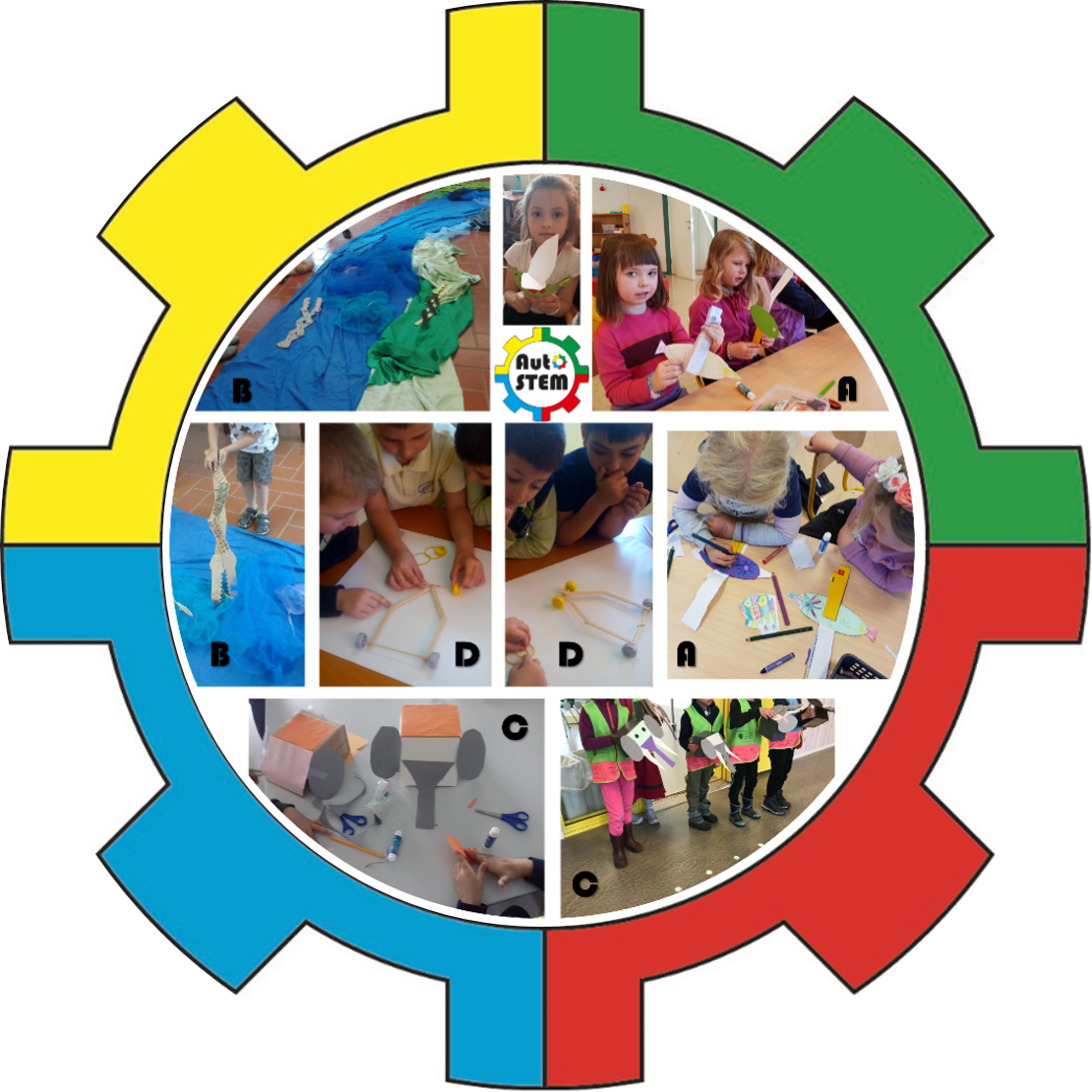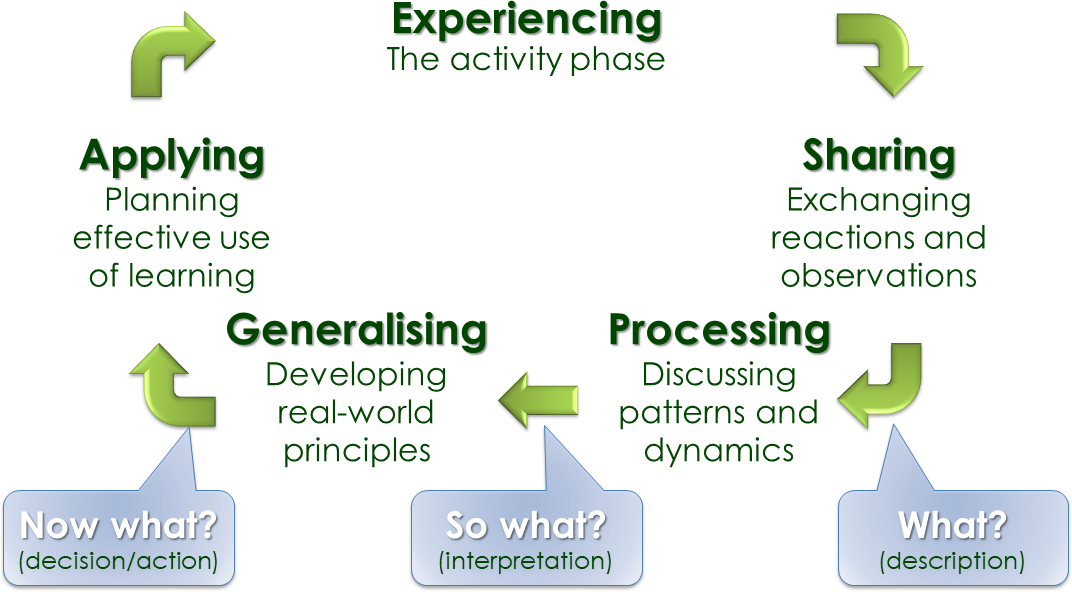Parts of this submodule are adapted from Thiel, Severina and Perry (2020).
Introduction
According to Einstein (1954, p. 271), “all knowledge of reality starts from experience and ends in it.” This matches the viewpoint of John Dewey (1916, p. 313), who argued that “if knowledge comes from the impressions made upon us by natural objects, it is impossible to procure knowledge without the use of objects which impress the mind.” His pedagogical theory of “having an experience” (Dewey, 1934, p. 35) emphasises the importance of experience and reflection. This theory was further developed by Dewey’s colleague Kolb (2015) into the Experiential Learning Theory (ELT). Kolb describes learning as a cycle with four steps:
- (CE) Concrete Experience – having an experience while doing something
- (RO) Reflective Observation – reviewing what you have done and reflecting on the experience
- (AC) Abstract Conceptualisation – concluding and learning from the experience and
- (AE) Active Experimentation – planning and trying out what you have learned, which leads to a new concrete experience.
In the AutoSTEM project, we use the version of the Experiential Learning Theory proposed by Connors and Seifer (2005). This variant has five steps and is combined with questions by Borton (1970).
- As with Kolb’s cycle, it starts with experiencing. This is the activity phase when children are engaged in playing with automata or building one.
- The next step is sharing. If you want to exchange your impressions, ideas, and observations with others, you have to ask yourself, “What happened?”
- After the children shared their experiences, they can discuss if they find any patterns. This processing will help them answer the question “So what does this mean for me?”
- The meaning-making helps generalising from the special case that they experienced to principles that they can apply to a wider range of situations.
- The last step is about planning how the children can use what they have learnt by asking, “Now, what can I do?” and applying it. This leads to new experiencing and closes the cycle.
The figure below shows all these components. When you click on one of the steps, you can learn in more detail what it is about and how it is related to AutoSTEM.
References
Borton, T. (1970). Reach, touch, and teach: Student concerns and process education. New York: McGraw-Hill.
Connors, K., & Seifer, S. D. (2005). Reflection in higher education service-learning. Retrieved 18 August 2019, from https://www.yumpu.com/en/document/read/26360619/reflection-in-higher-education-service-learning
Dewey, J. (1916). Democracy and Education: An Introduction to the Philosophy of Education. New York: Macmillan.
Dewey, J. (1934). Art as Experience. New York: Putnam.
Einstein, A. (1954). Ideas and opinions. New York: Crown Publishers.
van Hiele, P. M. (1986). Structure and insight. A theory of mathematics education. Orlando: Academic Press.
Kolb, D. A. (2015). Experiential learning. Experience as the source of learning and development (2nd ed.). Upper Saddle River, NJ: Rearson Education.
Thiel, O., Severina, E., & Perry, B. (2020). Reaping the benefits of reflexive research and practice in early childhood mathematics education. In O. Thiel, E. Severina & B. Perry (Eds.), Mathematics in early childhood. Research, reflexive practice and innovative pedagogy (pp. 189-202). London: Routledge.


